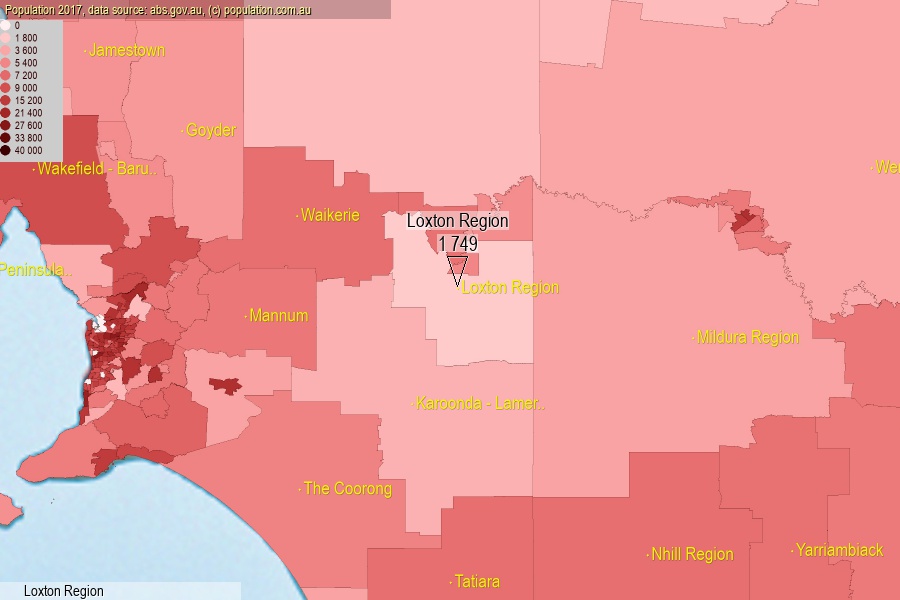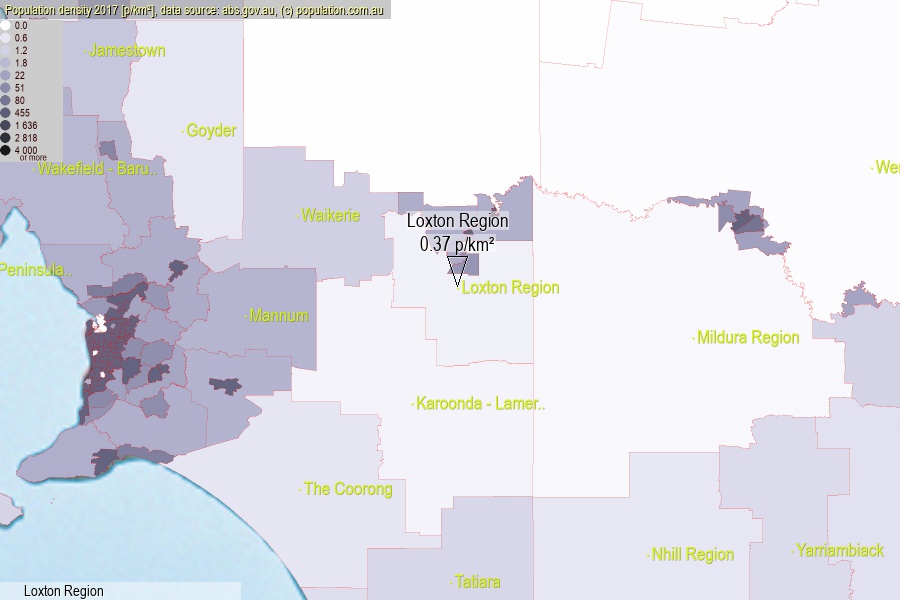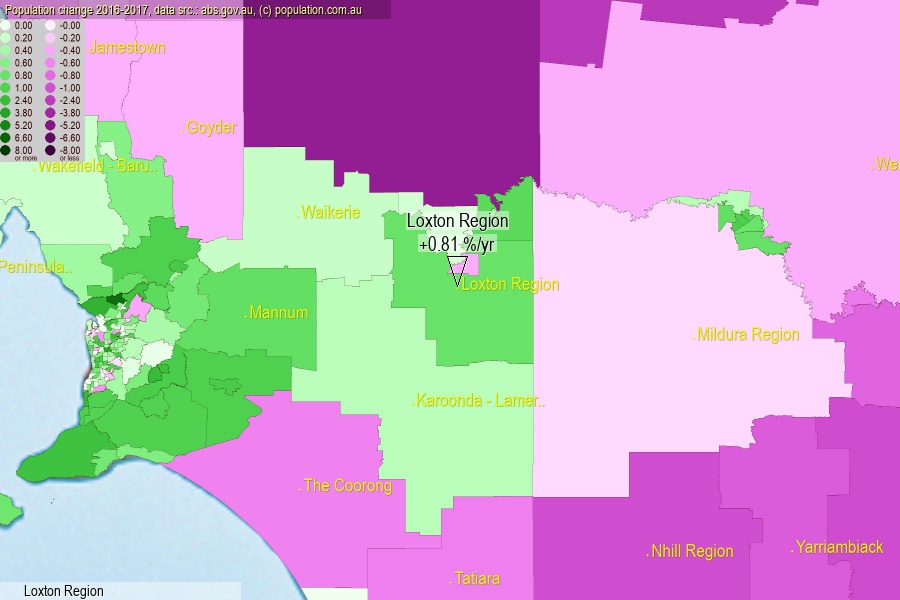 population.com.au
population.com.auLast official estimated population of Loxton Region (as Statistical Area Level 2) was 1 749 people (on 2017-06-30)[2]. This was 0.01% of total Australian population and 0.101% of SA population. Area of Loxton Region is 4 790.40 km², in this year population density was 0.37 p/km² . If population growth rate would be same as in period 2016-2017 (+0.81%/yr), Loxton Region population in 2025 would be 1 865. [0]



Click to enlarge. Loxton Region is located in the center of the images.
Population [people], population density [p./km²] and population change [%/year] [2]
View borders » (new window) [4]
[1991-1992] +0.64 %/Yr.
[1992-1993] -1.81 %/Yr.
[1993-1994] -1.20 %/Yr.
[1994-1995] -1.30 %/Yr.
[1995-1996] -1.37 %/Yr.
[1996-1997] +0.14 %/Yr.
[1997-1998] +0.53 %/Yr.
[1998-1999] +0.24 %/Yr.
[1999-2000] -0.66 %/Yr.
[2000-2001] +0.48 %/Yr.
[2001-2002] -0.85 %/Yr.
[2002-2003] -1.10 %/Yr.
[2003-2004] -1.79 %/Yr.
[2004-2005] -1.53 %/Yr.
[2005-2006] -2.15 %/Yr.
[2006-2007] -2.10 %/Yr.
[2007-2008] -3.55 %/Yr.
[2008-2009] -1.46 %/Yr.
[2009-2010] -1.26 %/Yr.
[2010-2011] -2.06 %/Yr.
[2011-2012] -0.11 %/Yr.
[2012-2013] -0.57 %/Yr.
[2013-2014] -0.34 %/Yr.
[2014-2015] -0.17 %/Yr.
[2015-2016] -0.17 %/Yr.
[2016-2017] +0.81 %/Yr.
[0] Calculated with linear interpolation from officially estimated population
[1] Read more about SA2 and Australian Statistical Geography Standard (ASGS) on abs.gov.au
[2] Population data from Australian Bureau of Statistics (Population and density: 2017; change: 2016-2017)
[3] Digital Boundaries: Australian Statistical Geography Standard (ASGS) 2016.
[4] Border coordinates are simplifyed using Ramer-Douglas-Peucker algorithm.